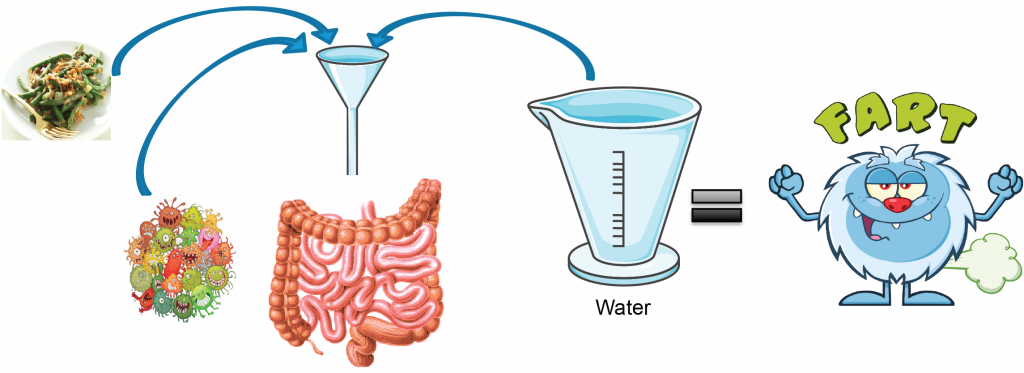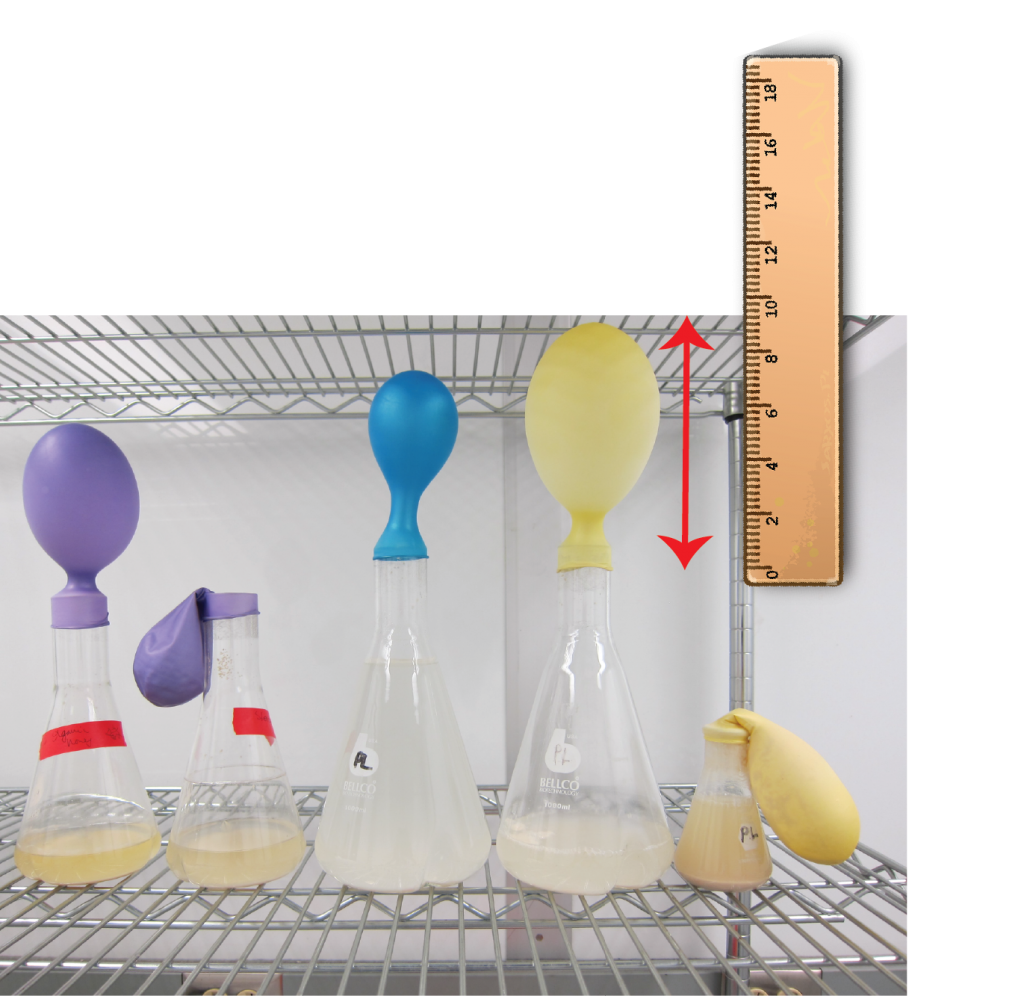When I (Marine) knew that I was going to have to take care of the third session “Why do we fart?” and it was going to follow on from the session where the kids made edible poo, I seriously asked myself how it would be possible to make my session as enjoyable and interesting for the kids as the previous week’s. My idea formed relatively quickly: some yeast (representing the gut microbiota), some sugar or flour (representing the different foods we eat), and some warm water in a flask, all topped off with a balloon. I knew fermentation of the sugar by the yeast in the flask would produce gases (farts!) and make the balloon inflate. And in my mind I could definitely see the kids enjoying the role of mini chemist and having fun with the inflating balloons, wondering whether they would explode at some point!

I prepared my session by looking at some experiments posted on the Internet, and adapting what I found. Initially, the experiment I designed involved seven flasks per group of four students and was quite complex. However, following the first session, run by Holly and Grace, I realised I was being ambitious in what could be achieved in one hour, so I simplified the experiment. I wanted the kids to remember the main take-home messages of the session – that gut bugs make us fart, and they need food and warmth to do this. I had two practice runs prior the session, to adjust the quantities of ingredients needed for the experiment and to ensure the required results would be achievable within one hour.

Before the hands-on part of the session, I planned to give the kids a brief explanation about what flatulence is and why we fart, so they could understand what we were trying to do with our experiments. After the kids had set up their experiments, I wanted to take the opportunity to introduce them to the concepts of a hypothesis, variability and replicates. By discussing with the kids what would they thought would happen, I thought it would give them a better understanding of how gut microbes make us fart. The students would be split into three groups, each of them doing the same set of four experiments. This would allow them to compare their results, and understand variability and why repeating an experiment and taking mean results is more accurate than doing an experiment only once. They would also learn how to analyse and report their results.

Pretty! Thiѕ has been a really wonderful artiϲle. Thanks for providing this information.
It’s һаrd to comе by experienced people for this topic, however,
you sound lіke you know what you’re talking about!
Thanks